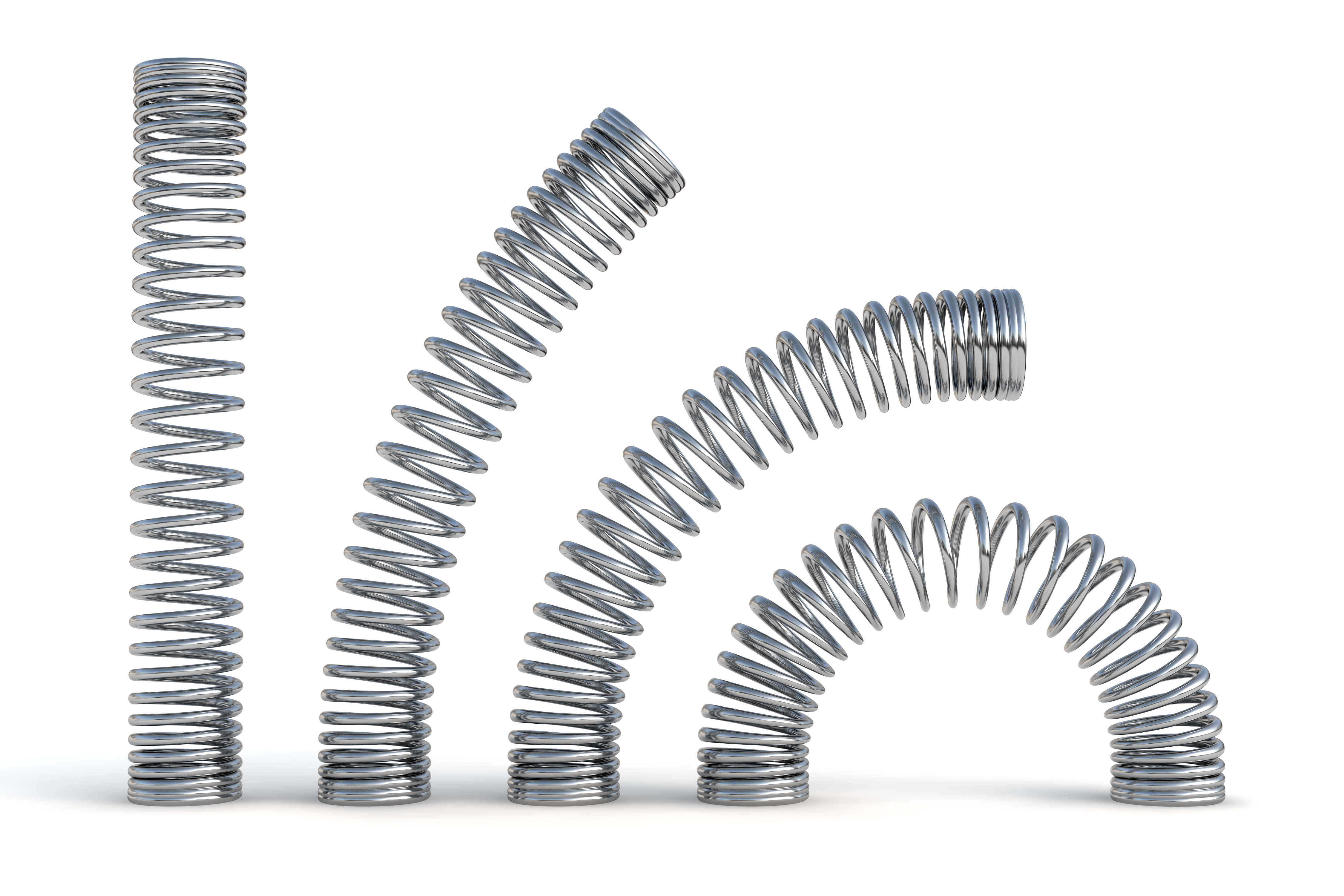The Properties of Compression Springs
Contents |
[edit] Introduction
Compression springs are the most commonly-used type of spring as well as the most economical, making it an important spring within the manufacturing industry. Aside from manufacturing, they are also used in a range of other industries including:
- Transportation.
- Construction.
- Materials handling.
- Agricultural.
- Aeronautical.
Compression springs can sometimes be confused with torsion springs due to their similarities in appearance; however, they are designed to do very different things.
[edit] What Is a compression spring?
Compression springs are open-coiled springs wound into a helical shape. They are designed to offer resistance to a compressive force applied axially, meaning that they push back when force is applied to them. Helically-wound compression springs are the most common configuration and have an extensive range of uses.
Compression springs can be formed in many different types such as:
- Conical.
- Hourglass.
- Barrel-shaped.
- Torsional.
- Magazine.
They are typically positioned over a rod or fitted into a hole. When subject to pressure by weight on their axis, the spring compresses. As it does this, it gains the potential to push back to its original position.
[edit] History of use
Some form of spring technology has existed for thousands of years. The earliest known application of spring technology is the bow and arrow. Coiled springs, however, did not appear until early in the 15th century.
These first compression springs were used in door locks in the 18th century to ensure that only one specific type of key could be used to unlock a door. They were later used in the first spring-powered clock that evolved into the first watches of the 16th century.
In 1676, British physicist Robert Hooke postulated Hooke’s law, which states that the exertion of a spring is proportional to the load applied to it, so long as this load does not exceed the material’s elastic limit.
[edit] Properties of compression springs
A feature that can set compression springs apart from other types of spring is the tightness of their coils. Compression springs are less tightly coiled than torsion springs and work in the opposite way to other springs – whereas some springs hold things together, compression springs keep things apart.
Compression springs are typically made from metal due to the stiffness of the material, particularly high strength alloys. A compression spring is fully extended when at rest. However, upon compression, the spring will express stored torsional energy in a pushing force. The shape-restoring force is proportional to the deflected distance of the spring.
[edit] Common uses of compression springs
Compression springs have many different purposes and functions. Probably the most famous use of a compression spring is the pogo stick. Thought to be originally patented in 1891, it rose to popularity in the 1970s, loved by children around the world.
Some more common uses of compression springs that we come across every day include:
- Valves.
- Locking doors.
- Railways.
- Electrical switches.
- Large stamping presses.
- Ballpoint pens.
Being the most common type of spring, the bulk of those manufactured are used in engineering, the defence industry and in vehicles.
[edit] Related articles on Designing Buildings Wiki
- Compression springs.
- Die springs.
- E-spring.
- Flat springs.
- Key qualities of springs.
- Large and Hot Coiled Compression Springs.
- Spring materials.
- Tension springs v torsion springs.
- The Difference Between Tension and Torsion Springs.
- The importance of gas springs.
- The Multiple Uses of Compression Springs.
- The Uses of Wire Forms Within the Construction Industry.
- Using springs in construction to prevent disaster.
- Wave springs.
Featured articles and news
RTPI leader to become new CIOB Chief Executive Officer
Dr Victoria Hills MRTPI, FICE to take over after Caroline Gumble’s departure.
Social and affordable housing, a long term plan for delivery
The “Delivering a Decade of Renewal for Social and Affordable Housing” strategy sets out future path.
A change to adoptive architecture
Effects of global weather warming on architectural detailing, material choice and human interaction.
The proposed publicly owned and backed subsidiary of Homes England, to facilitate new homes.
How big is the problem and what can we do to mitigate the effects?
Overheating guidance and tools for building designers
A number of cool guides to help with the heat.
The UK's Modern Industrial Strategy: A 10 year plan
Previous consultation criticism, current key elements and general support with some persisting reservations.
Building Safety Regulator reforms
New roles, new staff and a new fast track service pave the way for a single construction regulator.
Architectural Technologist CPDs and Communications
CIAT CPD… and how you can do it!
Cooling centres and cool spaces
Managing extreme heat in cities by directing the public to places for heat stress relief and water sources.
Winter gardens: A brief history and warm variations
Extending the season with glass in different forms and terms.
Restoring Great Yarmouth's Winter Gardens
Transforming one of the least sustainable constructions imaginable.
Construction Skills Mission Board launch sector drive
Newly formed government and industry collaboration set strategy for recruiting an additional 100,000 construction workers a year.
New Architects Code comes into effect in September 2025
ARB Architects Code of Conduct and Practice available with ongoing consultation regarding guidance.
Welsh Skills Body (Medr) launches ambitious plan
The new skills body brings together funding and regulation of tertiary education and research for the devolved nation.
Paul Gandy FCIOB announced as next CIOB President
Former Tilbury Douglas CEO takes helm.
UK Infrastructure: A 10 Year Strategy. In brief with reactions
With the National Infrastructure and Service Transformation Authority (NISTA).























